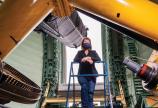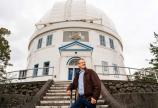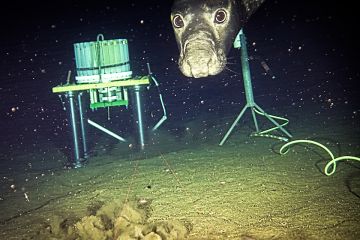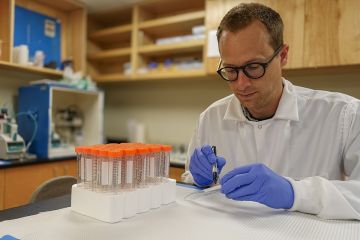Link between telescopes reveals a galactic fossil
- Dorothy Eggenberger
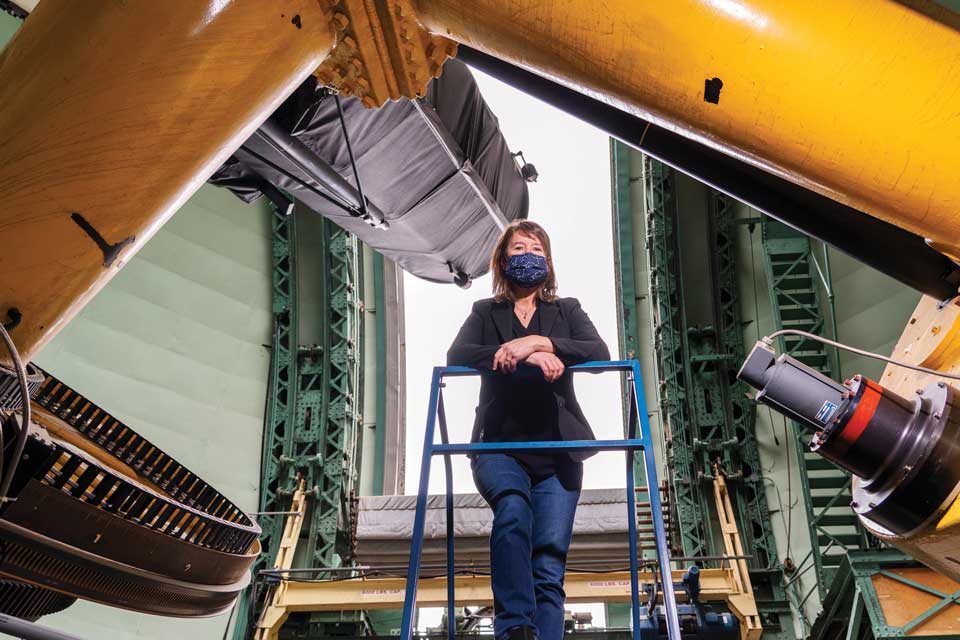
Synchronized spectroscopy: first-of-its-kind link between telescopes spots a stream of ancient stars
Following the Big Bang, the whole Universe was in a hot, dense state—yes, the lyrics that open The Big Bang Theory TV series are true. Hydrogen and helium were produced in the hot, dense conditions of the birth of the Universe. But the heavy metals we’re familiar with today—the iron in our blood, the calcium in our teeth, the silicon in our phones—came later, forming at the cores of stars just after the Big Bang.
The origin of metals and their crucial role in galaxy formation are still a mystery. Similar to the chicken-and-egg causality dilemma, metals are formed in the cores of stars but stars require metal to form. So how did the Universe go from no metals to having enough metals to allow galaxies to form?
“You had to build up the metals from some generation of stars—we call these first stars—and we’ve never found one,” says Kim Venn, UVic physics and astronomy professor and director of the Astronomy Research Centre (ARC). “We believe they must have formed and disappeared very early on. Trying to find traces of those first stars is a big goal for astronomers right now.”
Venn co-led an international team that found one of these traces—a first-of-its-kind discovery that was published in Nature earlier this year. Not only was it a breakthrough for what they found—a star cluster with the lowest concentration of metals ever observed—it was made possible by making two ground-based telescopes work together in a new way.
The galactic fossil, located in the outer reaches of the Milky Way, is an ancient star cluster or stellar stream, named C19, that has a metallicity that’s half of any previously known star cluster. The discovery challenges long-standing theories on early galaxy formation.
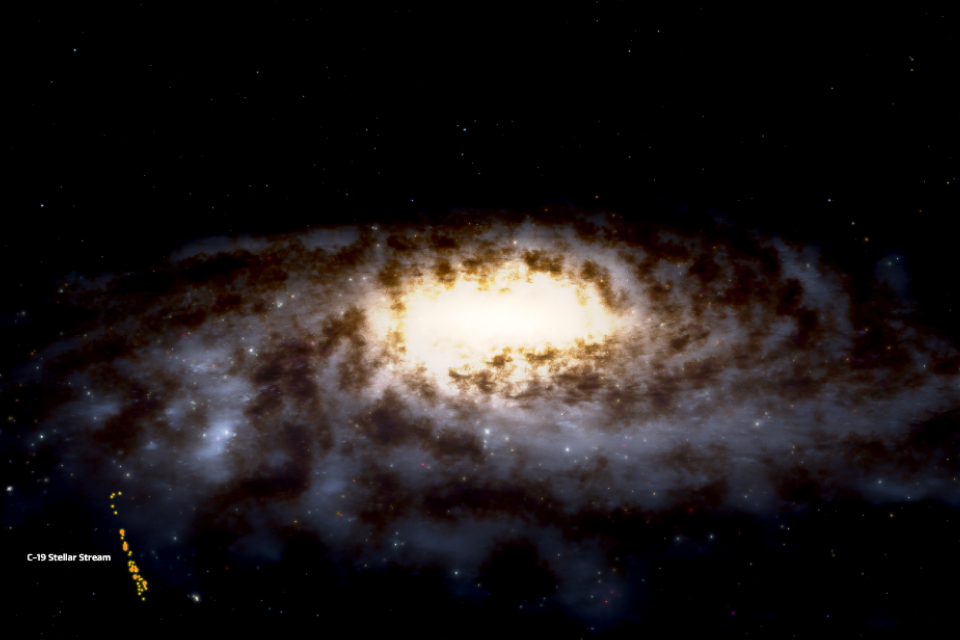
Mapping the galaxy
How do you find one standout stellar stream in the vast sea of the Milky Way? You need to know where to look and how to spot it, says Venn.
Scientists use astronomical surveys to build a roadmap to the Universe. Each survey is a map or image of a region of the sky. Venn’s team, the Pristine collaboration, combined the results of two surveys.
That research team includes scientists and engineers at the National Research Council of Canada’s (NRC) Herzberg Astronomy and Astrophysics Research Centre who are adjunct faculty at UVic, along with international astrophysicists who collaborate from locations around the world: Toronto, Europe and Russia.
Together, they search for metal-poor stars in the Galactic halo using the Canada-France-Hawaii Telescope (CFHT) on Maunakea, Hawaii. To start, they designed a filter sensitive to stellar metallicity using spectroscopy. In a way, they were looking for the absence of certain types of light: the weaker the feature, the more metal-poor the object.
Signals in shades of starlight
You may remember dangling a prism in a sunbeam as a kid and marvelling at the rainbow it produced. That, in its simplest form, is spectroscopy. Astronomers use spectrographs to split the light from a star into a rainbow. By examining the rainbow, scientists can identify features of the chemical elements in the stars.
The unique filter designed by Venn’s team examines the dark lines on top of those rainbow of colours. These dark lines, or absorption lines, occur when photons of light are taken out of the spectrum as it passes through the atmosphere of the star. Astronomers can identify which lines are due to which chemical, and thereby establish metallicity or specific chemical abundances of each star.
What an amazing thing, isn’t it? Stars that we will never be able to go and touch, that we’ll never be able to send a robot to grab a piece of that atmosphere, and yet we can still figure out their composition from these rainbows, from these spectra.”
—UVic astronomer and Director of the Astronomy Research Centre Kim Venn
Using the European Space Agency’s satellite mission Gaia, Venn’s team focused on a group of extremely metal-poor stars that seemed to have a common orbit in the Galactic halo. Unlike regular clusters that are spherical, C19 is arranged along a stream that extends about 20,000 light years from the Galactic Centre at its closest approach and roughly 90,000 light years at its farthest. This group of stars stretches an impressive expanse of the night sky—roughly 30 times the width of the Moon—although it is not visible to the naked eye.
“Most clusters are kind of a ball,” explains Venn, “That makes them gravitationally stable so they last a long time. Streams like C19 are no longer gravitationally stable. To still find them as a stream means that the cluster has been disrupted fairly recently. And by fairly recently, I still mean a couple billion years—but it’s only a couple compared to 13 billion.”
Fibre-focused starlight
While the telescopes we send to space often catch big headlines, it was a new trick to make two Earth-based observatories work together that made Venn’s discovery possible. The revolutionary linkage was proposed by Pristine survey member John Pazder, who led the team that built the unique optical fibre system called GRACES. Pazder, an NRC engineer and UVic alum, is midway through an established career in astronomy and is also studying for his PhD at UVic.
GRACES was a technical breakthrough to solve a specific problem for the team. The Gemini Observatory has one of the largest telescopes on Maunakea, but the CFHT (also on Maunakea) has one of the best optical spectrographs. GRACES connects the two, using an optical fibre to focus starlight collected at Gemini and directing it to the spectrograph at CFHT. This is the first time an instrument in one observatory has been successfully used by another observatory, effectively allowing instruments to be shared between the community of telescopes on Maunakea.
“The team at NRC is very proud to have been able to design and build GRACES,” says Pazder. “It was a very challenging project and required the development of new ways of working with the optical fibre to prevent the loss of the quality of the light. Dr. Venn’s work shows that we were not only able to succeed at GRACES, but we were able to produce a world-class instrument capable of cutting-edge research.”
The concept was decades old, but never successfully performed—until now.
“I dare say if it weren’t for John’s tenacity and ingenuity, GRACES would never have come into being,” recalls then-CFHT Executive Director Doug Simons. “Toward the end of the development of the fiber system . . . I distinctly recall reading John’s reports with amazement. He was getting exceptional throughput with the 270m fiber . . . and the performance of injection optics was amazing. I remember thinking, unless I don’t understand how this system really works, when we get it on the sky, it basically has to work as predicted. And to everyone’s delight, that’s exactly what happened.”
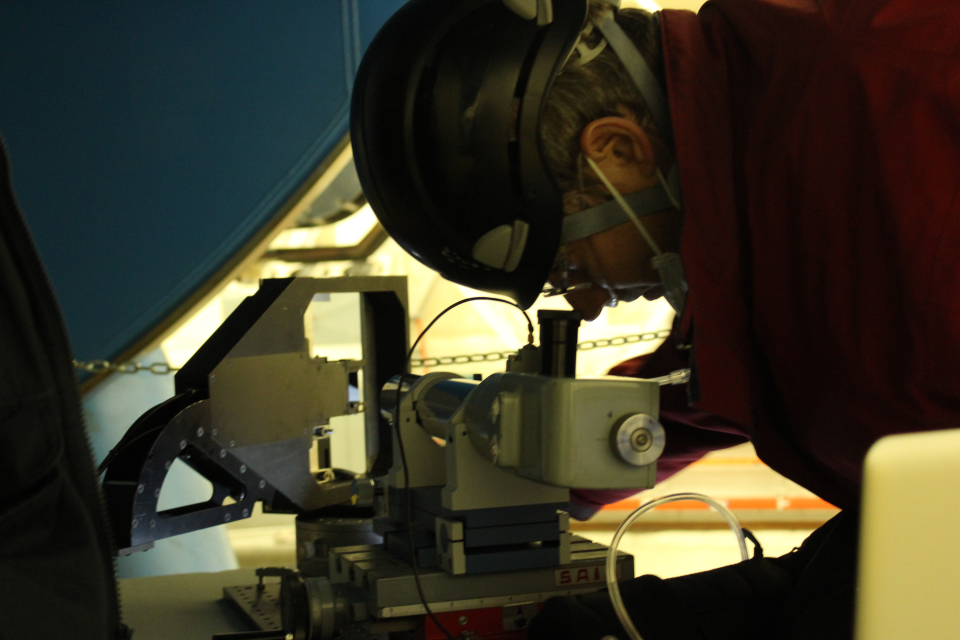
Venn was among the first researchers to work on spectra taken with GRACES, the first to publish research with that data, and is continuing her work using it as part of a Gemini Observatory Large and Long Program. She and Pazder have been working together a long time—and will continue to do so as they look for similar traces of the early Universe.
The future of discoveries about the Universe’s distant past
In astronomy we often say when it comes to objects there’s zero, one, or many. So far all we’ve done is gone from zero to one. Now that we know what to look for and how to find them, we want to find more.”
—UVic astronomer and Director of the Astronomy Research Centre Kim Venn
Her team is already investigating another stellar cluster. They’re also in the process of installing a new high-resolution spectrograph in Gemini South in Chile. Once launched, the team will search for similar stellar streams in the Southern Hemisphere.
The discovery of C19 will also foster follow-up projects. UVic cosmologist Julio Navarro, for example, has started working with his international collaborators, postdoctoral researchers and students on modelling the origins of C19 and the potential implications on our understanding of dark matter.
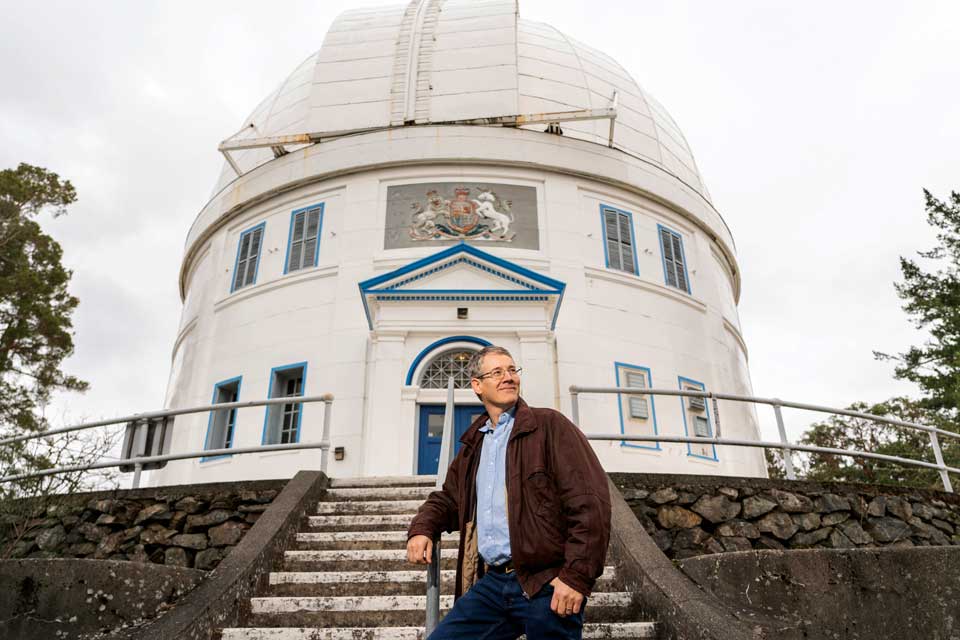
- Related: Expert Q&A with Venn
Photos
In this story
Keywords: research, astronomy, technology, international, graduate research, alumni, partnerships
People: Kim Venn, John Pazder, Julio Navarro
Publication: The Ring

